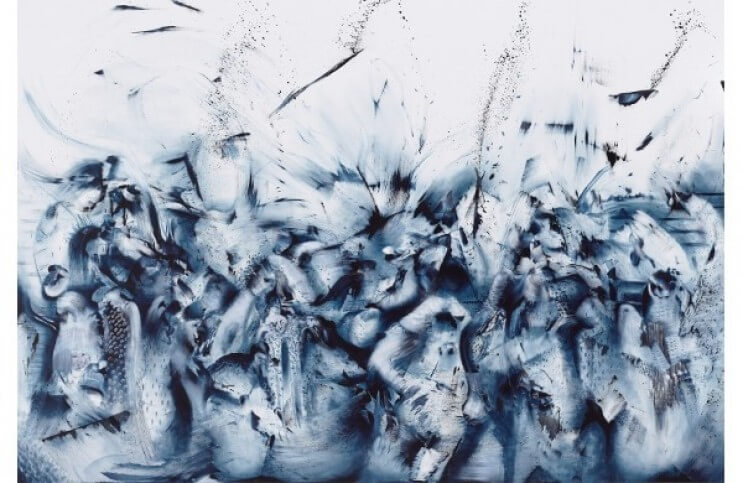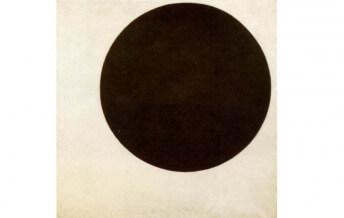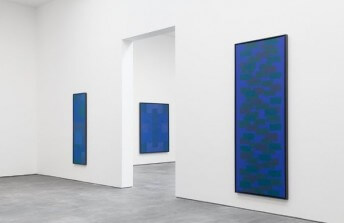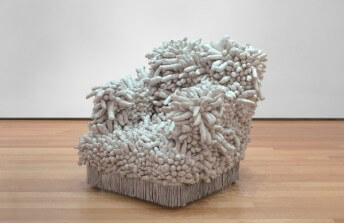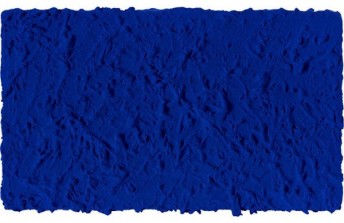Dynamism and Conflict in the Art of Ali Banisadr
Jan 5, 2018
Ali Banisadr is an emergent master. His impossibly complex oil paintings open magical windows into imaginary space. Lush and dynamic, to view one is to be drawn into it. The Iranian-born Banisadr says he is “channeling unknown places of the psyche” when he paints. His work is routinely compared to that of artists like Hieronymus Bosch and Francis Bacon. Personally, I see in it the charisma and lyricism of the work of Shinique Smith, and the emotive depth of paintings by Cecily Brown. But aside from the intensity and beauty of what Banisadr does, something else about him fascinates me. He is a synesthete—someone who experiences the involuntary activation of one sensory pathway by another. He reports hearing music when he looks at paintings. Combinations of forms, shapes, colors and lines are translated by his brain as sounds. While looking at paintings by other artists, the visual music he perceives offers him heightened insight into the potential meaning of the work. And while working on his own paintings, the music he hears reveals hidden clues as to where the composition wants to go—it guides him, like a companion to his imagination. When I first heard Banisadr describe this feeling, I wanted to feel it, too. Though synesthesia is considered a defect, I felt somehow cheated by not having it. But then I remembered the words of the Roman playwright Terence: “I am human, so nothing human is alien to me.” I wondered—is synesthesia really a defect? Or is it an ability lying dormant within all of us? As wonderful as it is to look at the paintings Banisadr creates, there are evidently additional layers of depth awaiting us. If we could learn to hear the visual music, perhaps we could experience them the way he does, and help erase the imaginary boundary between what is abstract and objective about our world.
Many Doors to One World
Research on synesthesia is sparse. And even as some researchers are trying to understand it, others claim the name is inaccurate, and its symptoms are misunderstood. They believe a more accurate name for what people like Banisadr experience is ideasthesia. That word assumes that sensory experiences are cognitive, not physical. Synesthesia is a word that describes a dysfunction. Ideasthesia describes a psychic paradigm, within which each of us has a unique ability to operate. Think of each sense as a door to a world of perception. Synethesia assumes that our sense of smell should open a door to the world of aromas, our sense of sight should open a door to a world of visions, our sense of hearing should open a door to a world of sound, and so on. Ideasthesia assumes that all senses open a different door to the same world—one of cognitive perception. Every sense connects with every other sense in the world of our mind. Aromas connect with memories, which contain sights and sounds, which evoke emotions, which manifest as physical stimuli, which create feelings and emotions.
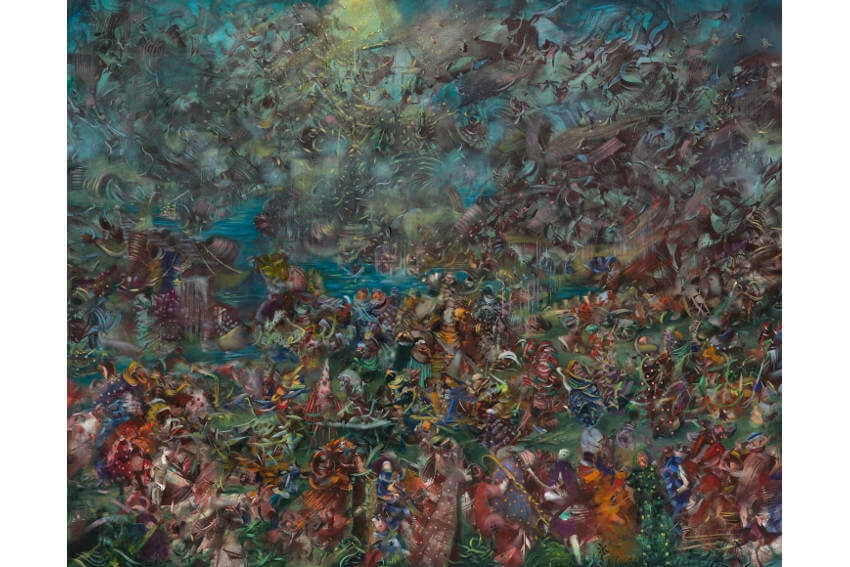 Ali Banisadr - Interrogation, 2010, Oil on Linen, 48 x 60 in, © 2018 Ali Banisadr
Ali Banisadr - Interrogation, 2010, Oil on Linen, 48 x 60 in, © 2018 Ali Banisadr
If we replace synesthesia with ideasthesia, we can imagine that seeing smells is the same as smelling them as long as the resulting cognitive experience is the same. Banisadr may hear music from a painting that I do not hear. But in the end, we might actually feel and think the same thing when we look at the painting, because even though our senses are relating differently to the available stimuli, the resulting thoughts and emotions are the same. We may have trouble communicating those thoughts and emotions to each other, but that could just be because we are using the wrong language—we are confused by semantics instead of focusing on universalities. But if we can imagine that ideasthesia is a perceptual paradigm and not a disorder, we can work toward transcending previous limitations. That could help us overcome our semantic biases towards the senses, as well as our semantic biases towards art, such as the need to describe it as figurative or abstract.
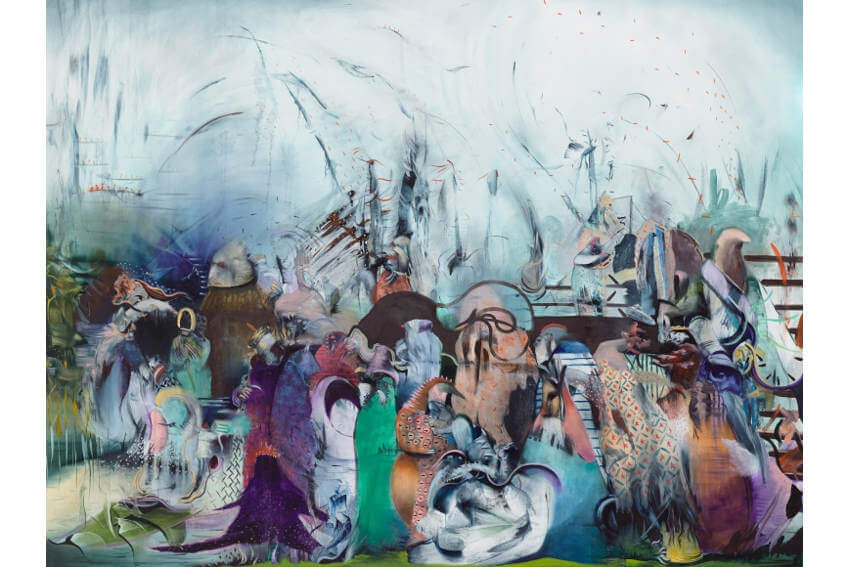 Ali Banisadr - Oil, 2016, Oil on Linen, 66 x 88 in, © 2018 Ali Banisadr
Ali Banisadr - Oil, 2016, Oil on Linen, 66 x 88 in, © 2018 Ali Banisadr
Details and Mysteries
The paintings Banisadr creates are perfect windows into ideasthesia. They are arenas of simultaneous conflict and cooperation. Each element is separate and unique, yet each fits into a cohesive universe defined by visceral connections. Figuration melts into abstraction; abstraction hints at something literal. His paintings are visual music, whether we hear the music or see it. They are constructed by individual details—dots, colors, scrawls and blurs, or maybe notes, pauses, and beats—whose mystery comes to life through their relationships. The optic symphony shatters the need to define what we are experiencing. On some fundamental, primal level, we know there is no difference. These images inhabit a space where separation of the senses, and separation of aesthetics, is just academic. They invite viewers into a world of complete perception.
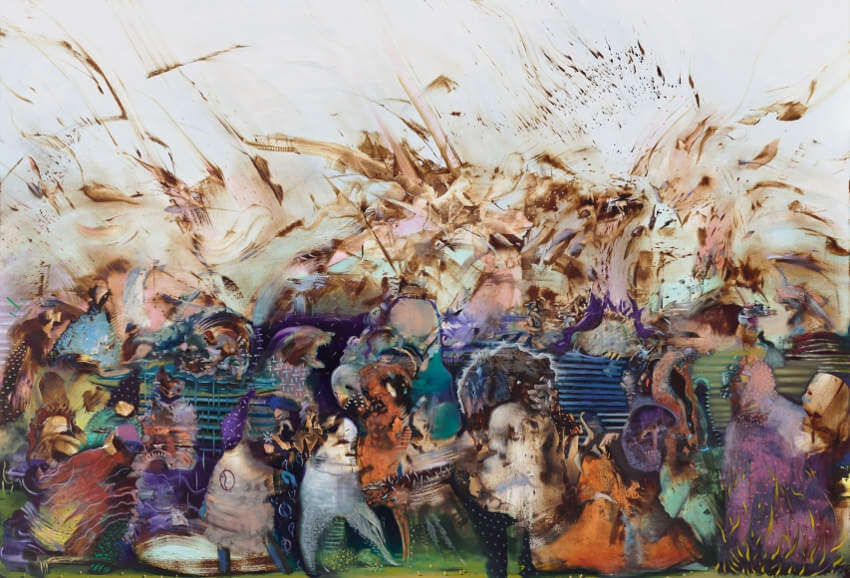 Ali Banisadr - We Work in the Shadows, 2017, Oil on Linen, 82 x 120 in, © 2018 Ali Banisadr
Ali Banisadr - We Work in the Shadows, 2017, Oil on Linen, 82 x 120 in, © 2018 Ali Banisadr
Maybe I sound over dramatic. But there is an enlightening video on the website of the Metropolitan Museum of Art, which owns work by Banisadr, in which he talks about The Adoration of the Magi (1475), by Hieronymus Bosch, the painter to whom he is most often compared. Banisadr calls the perspective of the painting, “God’s point of view.” He says,“Since you’re not in it, you can be a sort of judge about what you’re witnessing.” He is talking about detachment. But then he talks about something immersive—the music of the painting. He says it sounds to him as if madness is about to be unleashed from the space where the Magi are gazing upon the child. To me, the paintings Banisadr creates glimpse that maddening release. They reveal both the majesty and terror of life. They show me I am insignificant, and yet hint that I am also part of something only in its infancy, and which has only begun to be understood.
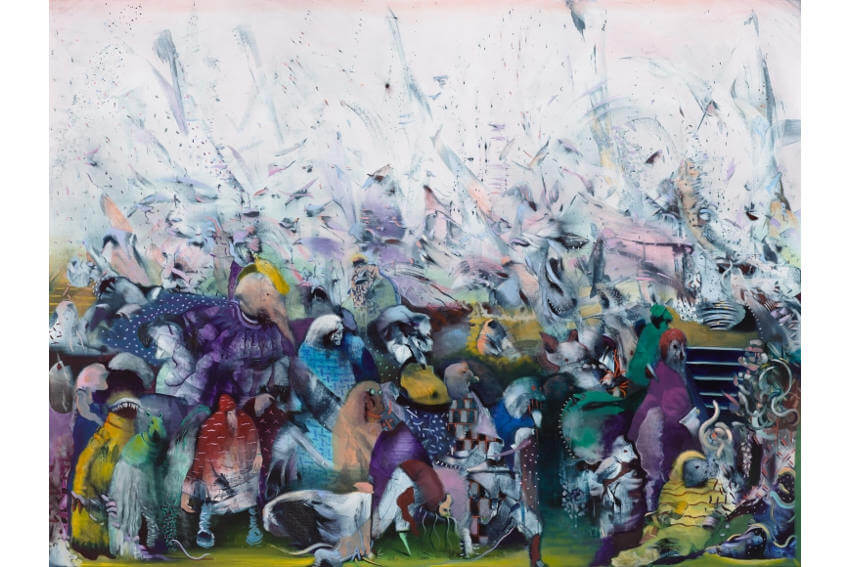 Ali Banisadr - The Rise of the Blond, Oil on Linen, 66 x 88 in, 2016, © 2018 Ali Banisadr
Ali Banisadr - The Rise of the Blond, Oil on Linen, 66 x 88 in, 2016, © 2018 Ali Banisadr
Featured image: Ali Banisadr - Trust in the Future, 2017, Oil on Linen, 82 x 120 in, © 2018 Ali Banisadr
All images used for illsutartive purposes only
By Phillip Barcio
